from the Step Pyramid complex of King Netjerikhet (AKA Djoser, Djeser, Zoser), founder of the 3rd Dynasty and the Old Kingdom 2600+ BCE
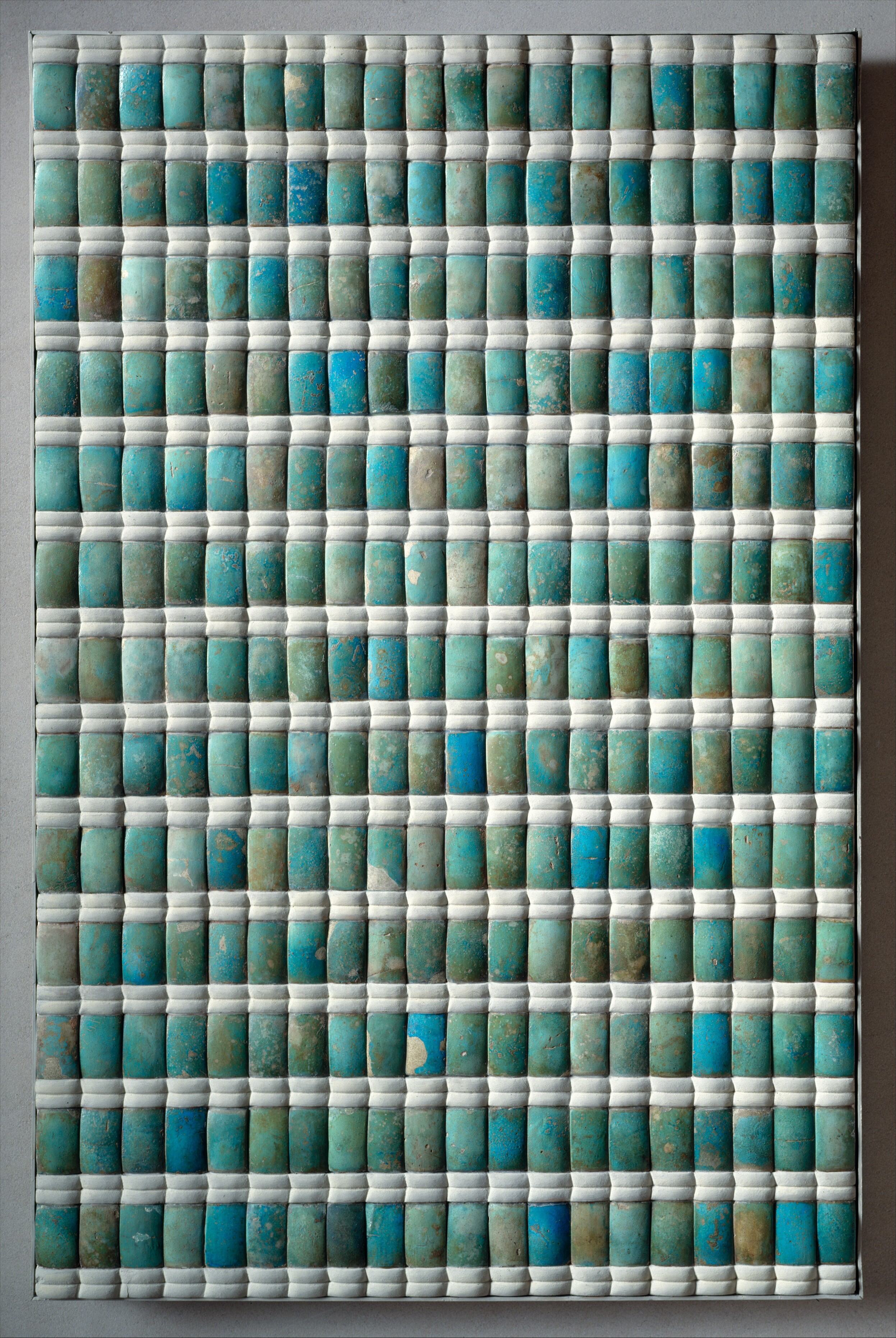

Egypt re-opens ancient tomb of King Djoser after restoration | AP News | September 14, 2021
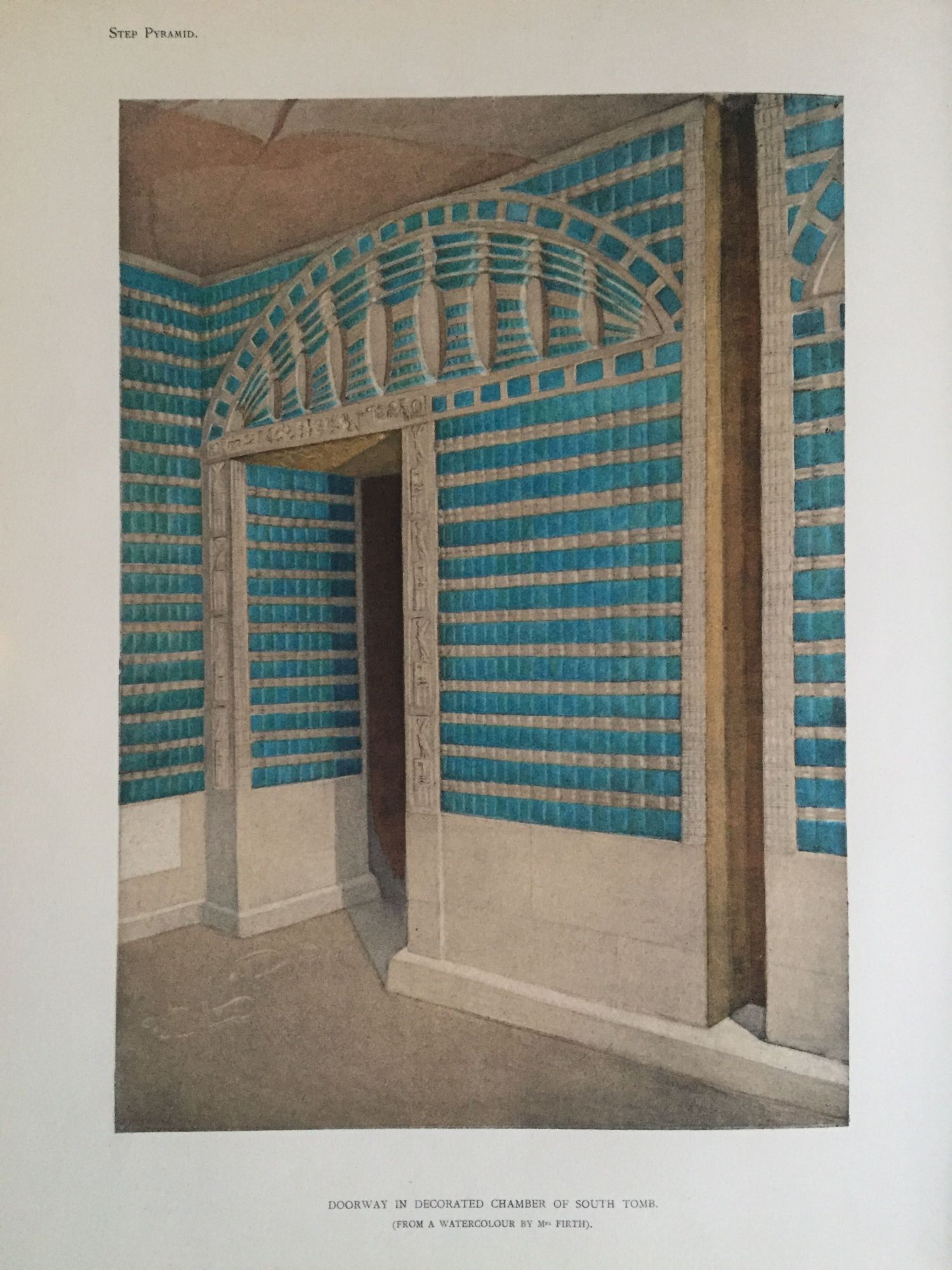

Please open in new tabs and enlarge
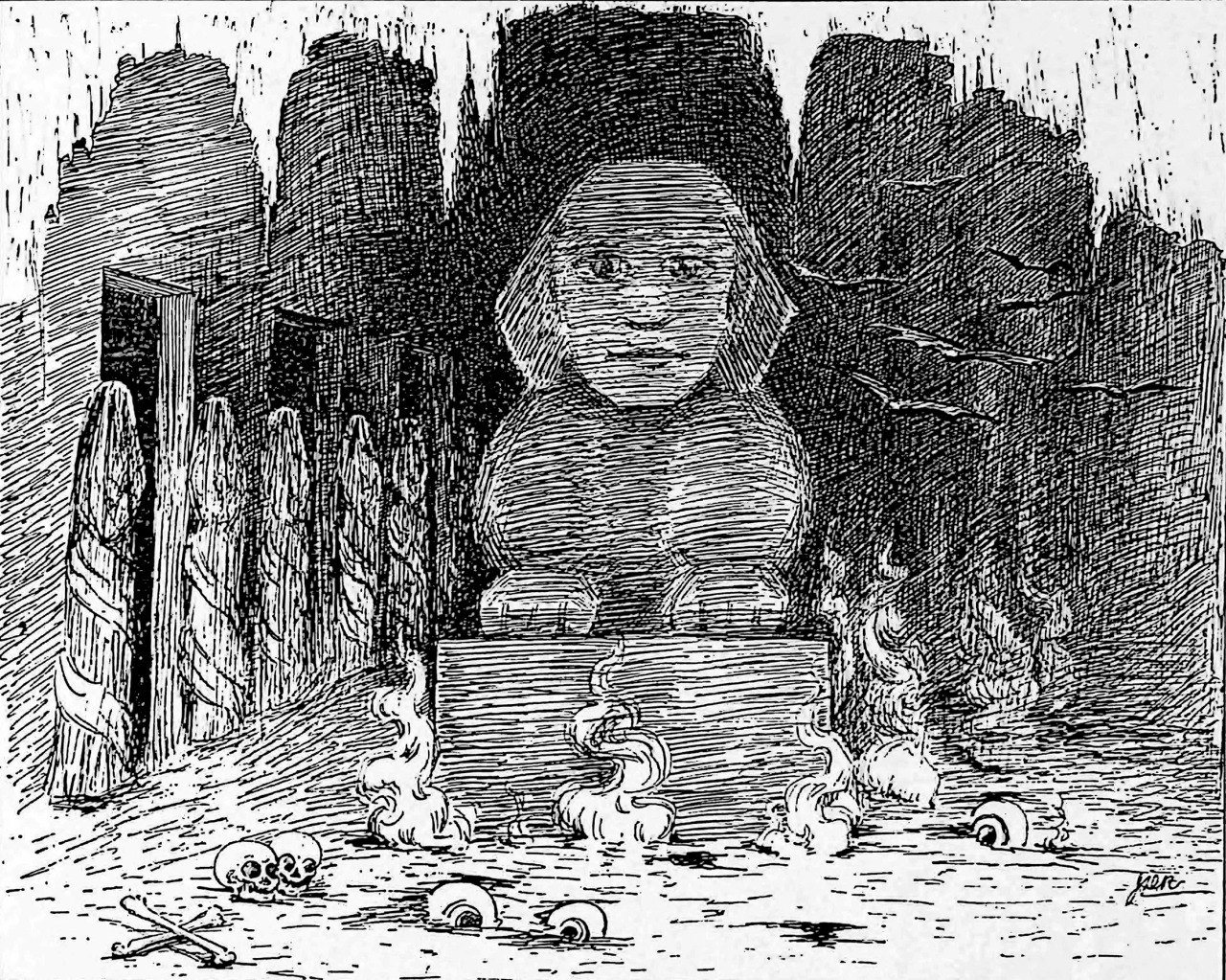
From the University of Arkansas 1898 yearbook.
Gazing out over the sands of Egypt for thousands of years: strange sphinxes share their riddles in my sphinx gallery.
Wondering about this post? Wait for the dissertation (TBA). For now: Weblog ◆ Books ◆ Videos ◆ Music ◆ Etsy

A piece of jewellery belonging to Princess Khenmet or Khnumit—called “the king’s daughter” in her royal titles–presumably a daughter of the 12th Dynasty pharaoh Amenemhat II during Egypt’s Middle Kingdom era
wikipedja

An alabaster (calcite) goblet from Tutankhamon’s tomb. The text around the edge reads, ‘May your spirit live, may you spend millions of years, you who love Thebes, sitting with your face to the north wind, your eyes beholding happiness.’
The barques of Amun, Mut, and Khonsu, arriving at Luxor Temple from Karnak Temple via the Avenue of Sphinxes during the reopening celebration of the Avenue; November 2021.
“The Opet Festival was an annual Ancient Egyptian festival celebrated in Waset (Luxor/Thebes), especially in the New Kingdom and later periods, during the second month of the season of Akhet; the flooding of the Nile. The festival was celebrated to promote the Fertility of Amun-Re and the Pharaoh, who was also believed to be the spiritual offspring of Amun-Re.
The Festival included a ritual procession of the Barque (a ceremonial boat that was used to transport statues of gods and deities) of the cult statue of Amun-Re, supreme god, his wife, Mut, and his son, Khonsu. This procession carried the statue for 2 km from Karnak Temple to Luxor Temple, the destination of the Opet Feast. Read More »
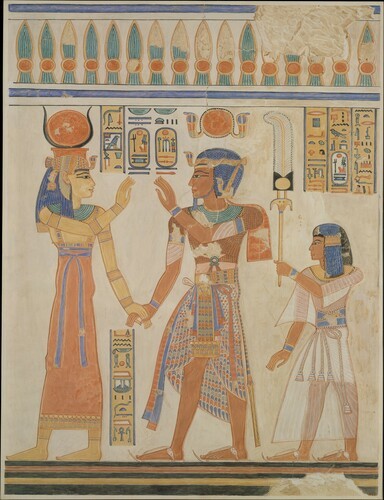
Ramesses III and Prince Amenherkhepeshef before Hathor, Nina de Garis Davies, Original ca. 1184–1153 B.C., Metropolitan Museum of Art: Egyptian Art
Rogers Fund, 1933 Size: facsimile: h. 94.5 cm (37 3/16 in); w. 64.5 cm (25 3/8 in) scale about 2:5 framed: h. 87.3 cm (34 3/8 in); w. 67.3 cm (26 ½ in) Medium: Paper, tempera paint, ink
Oh to be the Egyptian God of the Ecstasy of Playing the Sistrum
No, that’s gotta suck.
Like, you really love blissing out and playing the Sistrum, right?
But then you’re made the God of doing that. So now the thing you love is a job. And sure, you’re still good at it. But even if you’re not in the mood, you have to do it, because now it’s your job. And you’ve got divine performance reviews, and metrics, and half your time is in meetings and managing the lesser beings of sistrum-playing and ecstasy.
When really, all you want to do is play the sistrum and drink beer. Which is what you were already doing. Before some asshole made you the actual GOD of the Ecstasy of Playing the Sistrum.
What the fuck? You leave Ihy out of this.
People keep commenting along the lines of 'why does a penis hieroglyph even need to exist?' and I'm gonna tell you now...it crops up a lot:

No, really, it crops up a lot:

These are only a small selection of words it can turn up in. Hieroglyphs aren't emojis. They have consonantal (sound) values, so if that sound is needed, or the sign is the correct visual metaphor, then the sign will be used. This is why the dick hieroglyph will show up in the word dick, and also in the word for 'to be correct'.
Okay, so... what sound does the penis make??
The sign known as D52, in Gardiner's sign list, has the consonantal value that transliterates (the code we use to translate Hieroglyphs) as 'mt', which is why most of the words above contain 'mt' in some shape or form. The one's where it doesn't is where it's implying 'male' or in the case of donkey...well if you've been around horses and donkeys you'll know. Thing is, with Ancient Egyptian, we can't really fully reconstruct how it sounded because it's a dead language. So we have to piece together varying bits of information. I can say 'oh it's pronounced 'met'' but it's not fully accurate. That's just how Egyptologists verbalise this particular set of consonants. Read More »
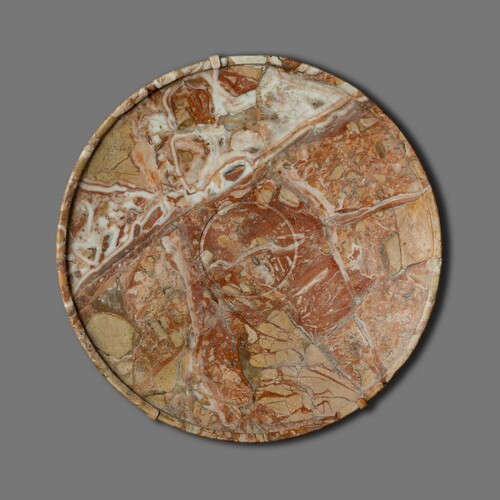
Dish, ca. 2750–2649 B.C.E., Metropolitan Museum of Art: Egyptian Art
Rogers Fund, 1912
Size: H. 5.9 cm (2 5/16 in.); Diam. 41 cm (16 1/8 in.)
Medium: breccia
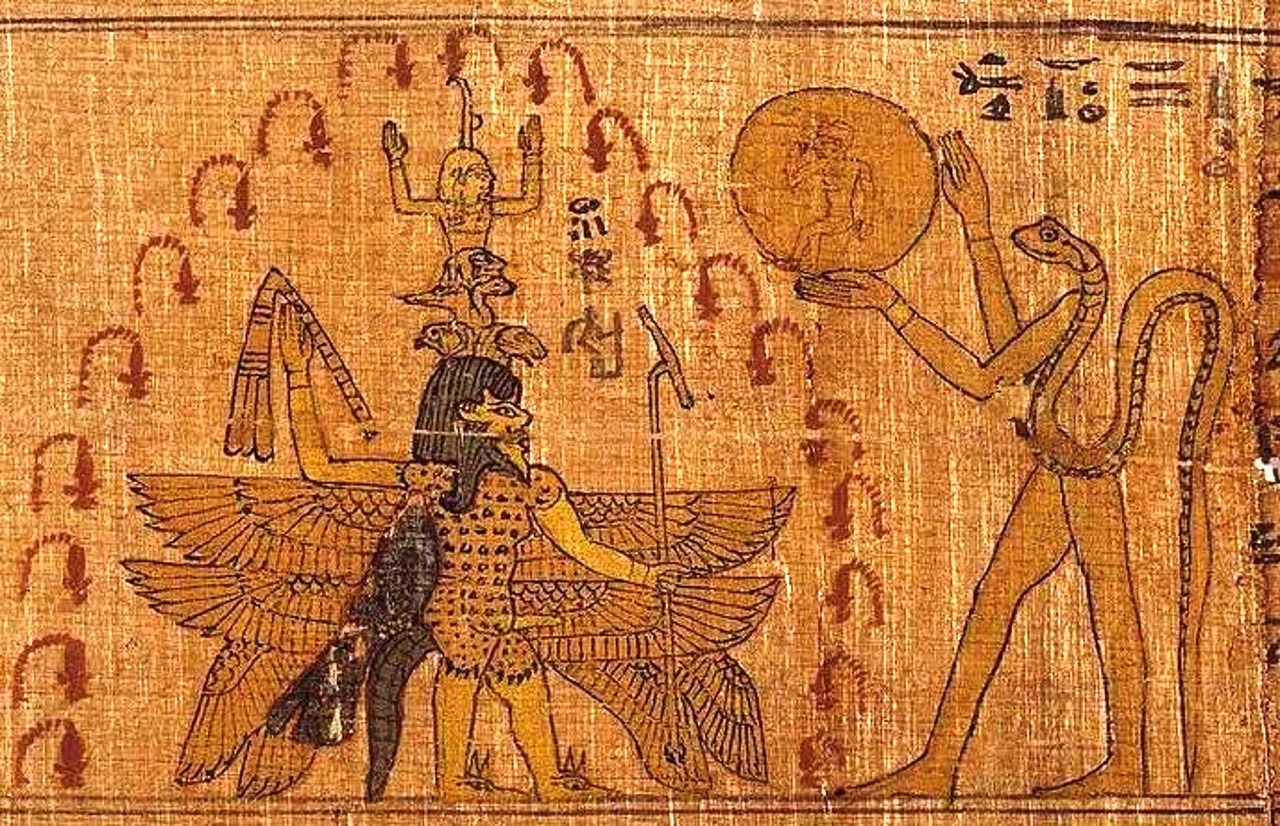
Bes Panteos and Nehebkau on papyrus VII - IV centuries BCE from the Brooklyn Museum in New York.
Bes stands opposite (nhb kȝw, “unifying souls”). It was believed that Nehebkau guards the entrance to the underworld, and is also a companion of the god Ra, protecting him during the night travels, accompanying the Lord of all things through the twelve valleys of Duat. The Nehebkau snake holds in his hands the newborn sun that has risen, here is depicted the moment of the transfer of authority to protect the solar deity from Nehebkau to Bes. Bes Panteos on this papyrus has one pair of arms, but then - eight wings. And, in addition to the bird’s tail, Bes also has a crocodile tail.
As late as the 19th century, local residents told foreigners visiting Luxor about a dwarf dancing at night in the ruins of the Karnak temple of Amon. Read More »
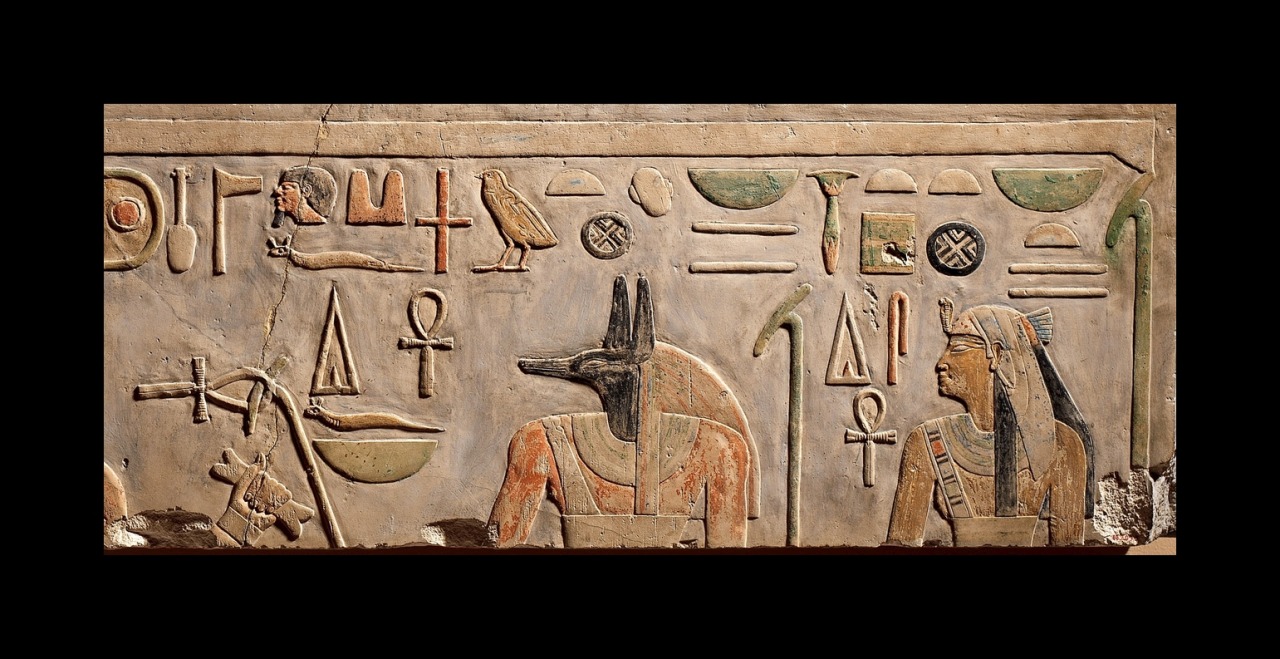
Anubis and Wadjyt
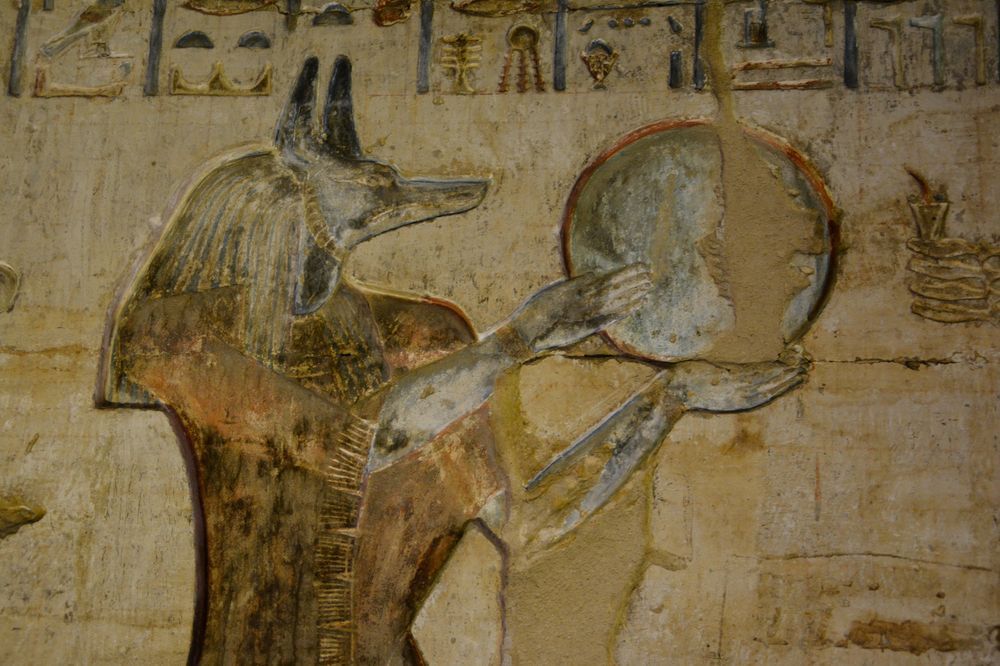
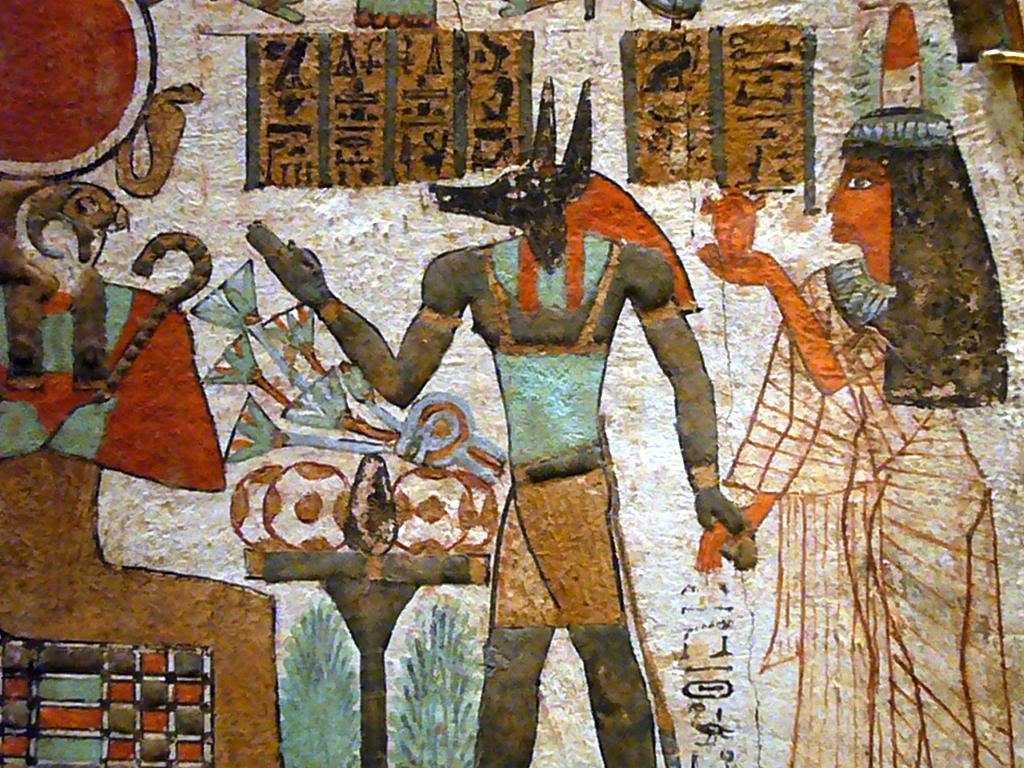
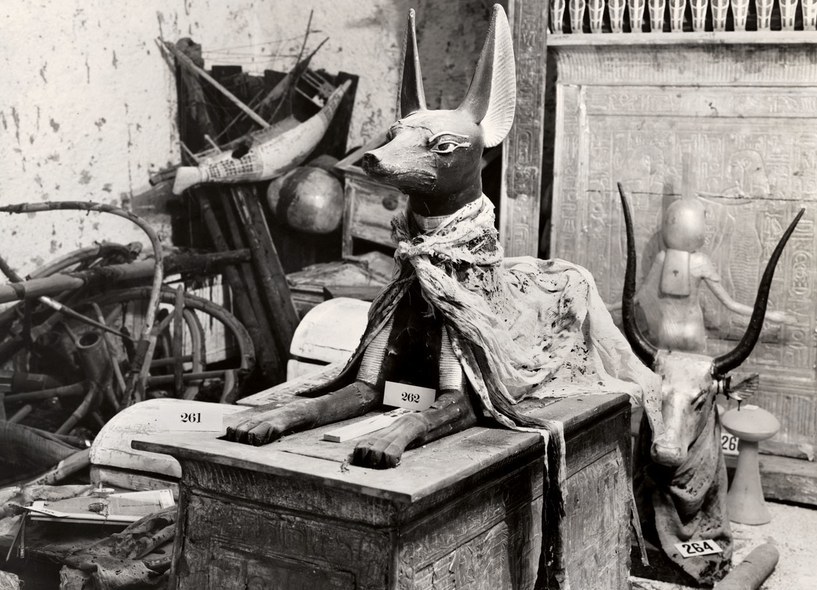
Tutankhamon's Anubis, photographed in situ by Harry Burton
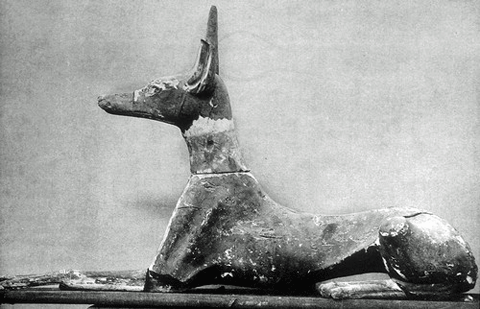
Horemheb's Anubis, also photographed by Harry Burton
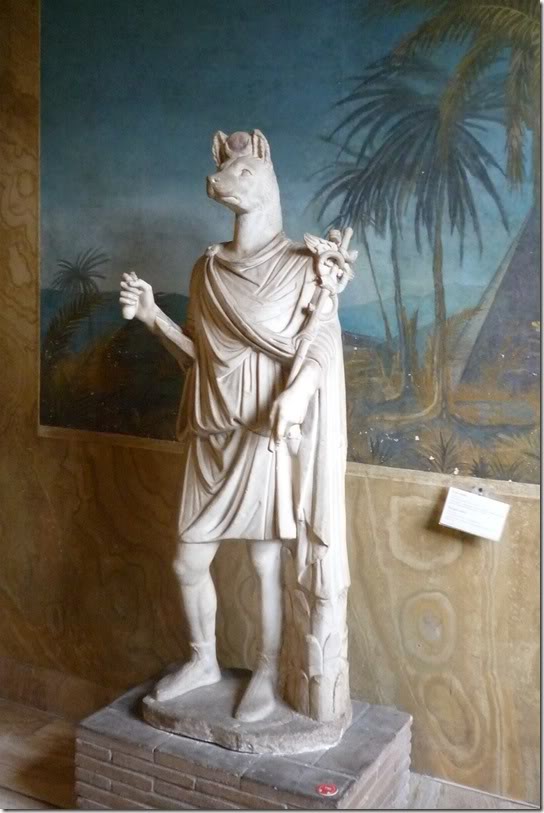
Roman Anubis
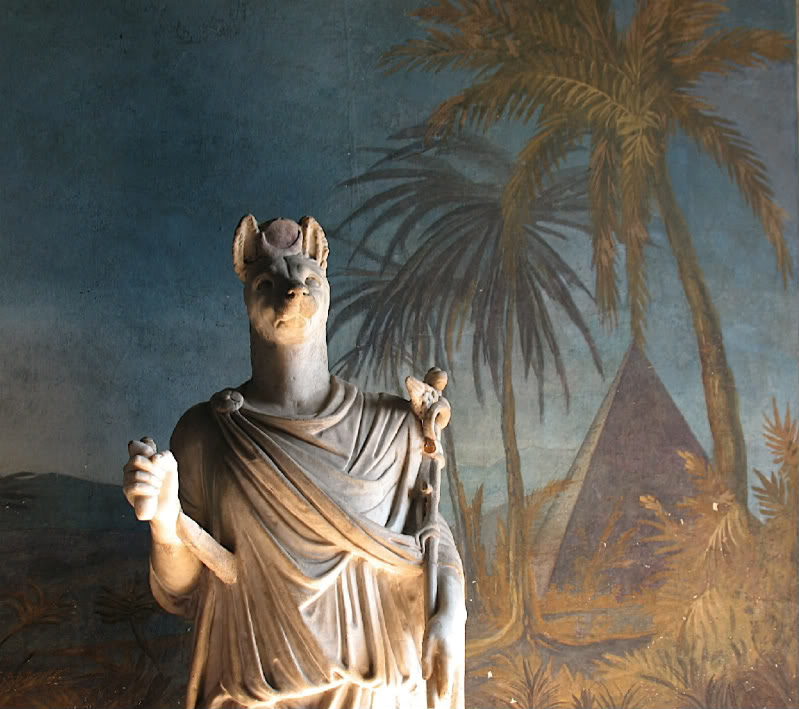
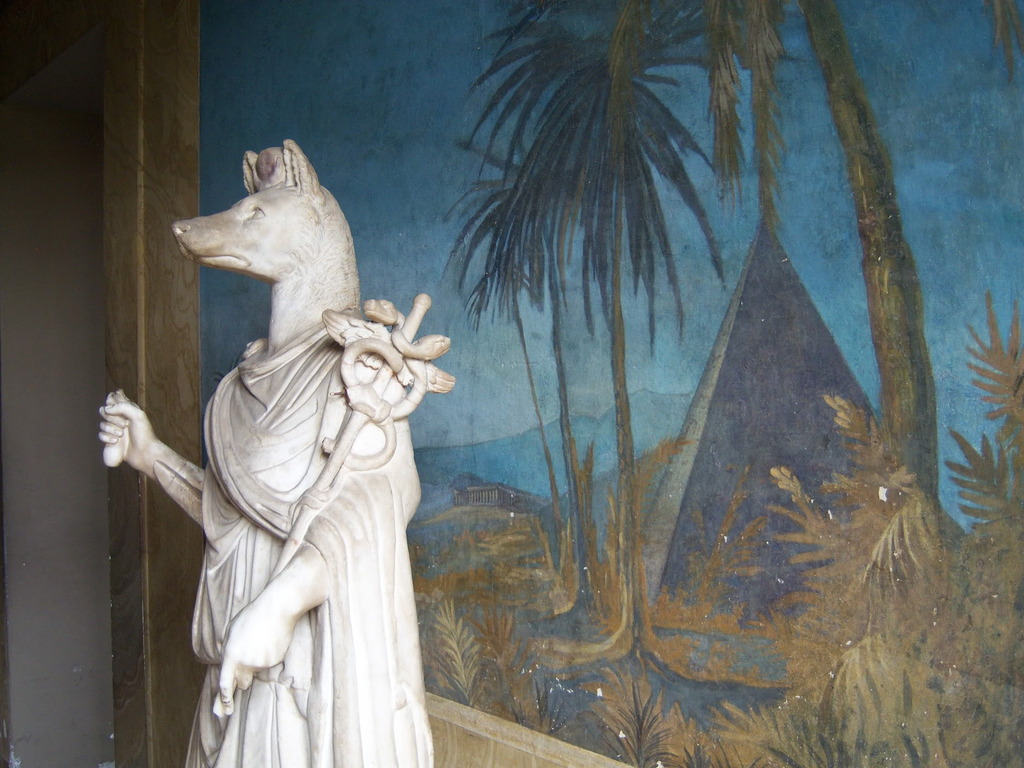
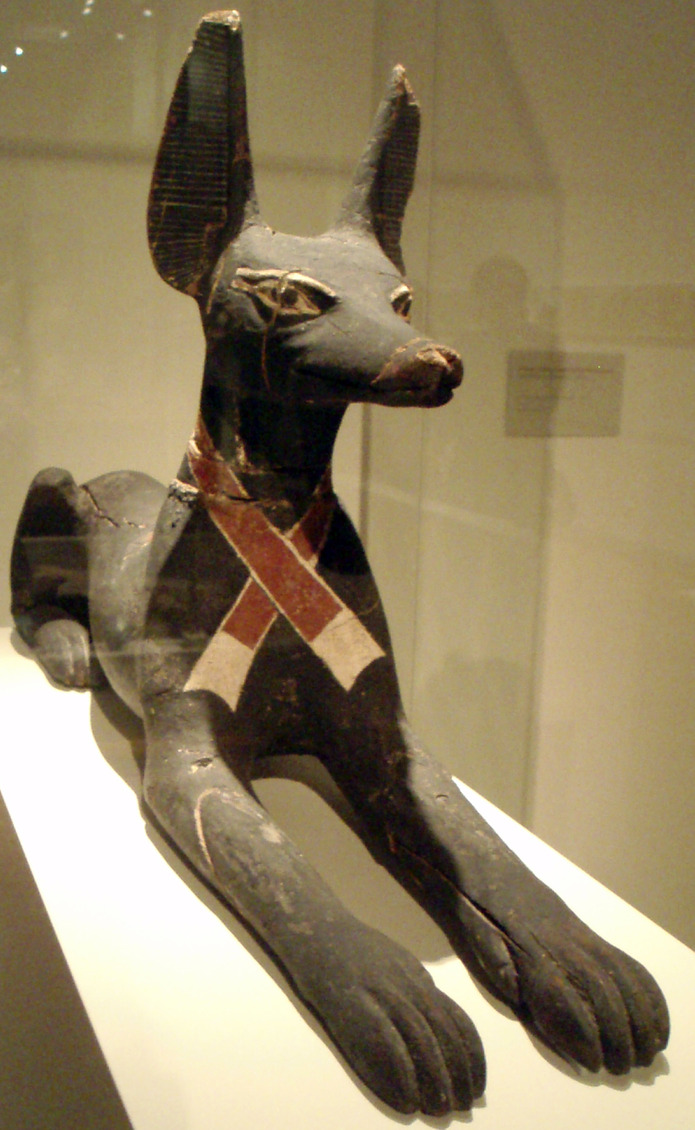
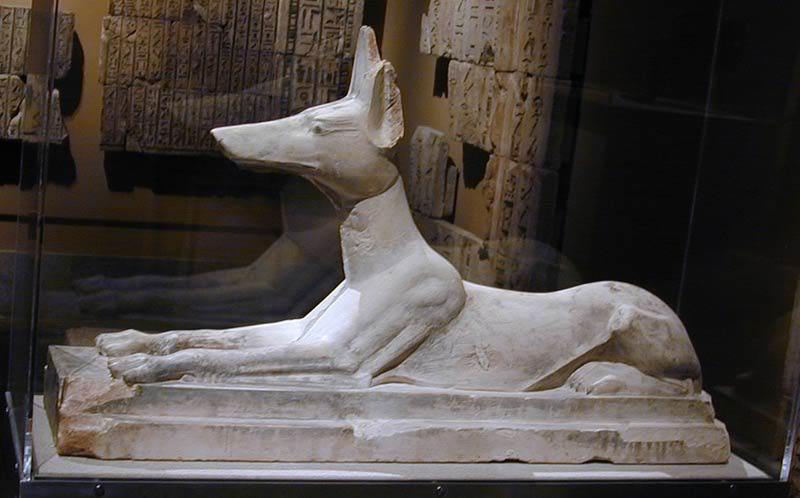
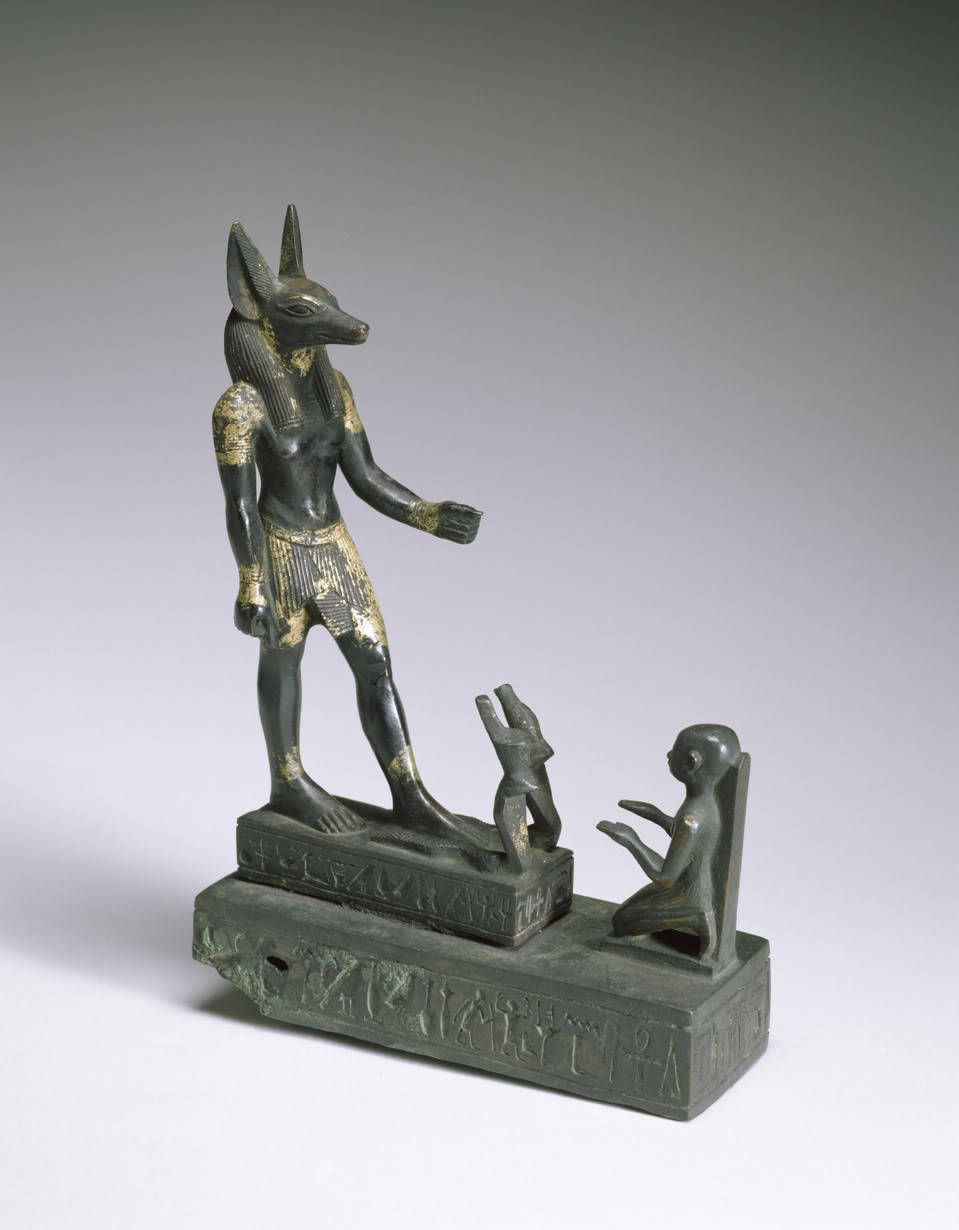
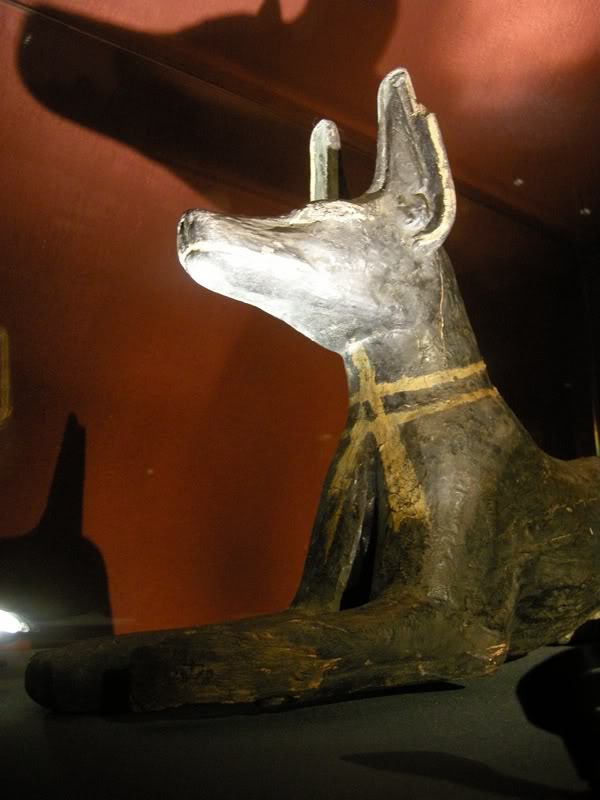
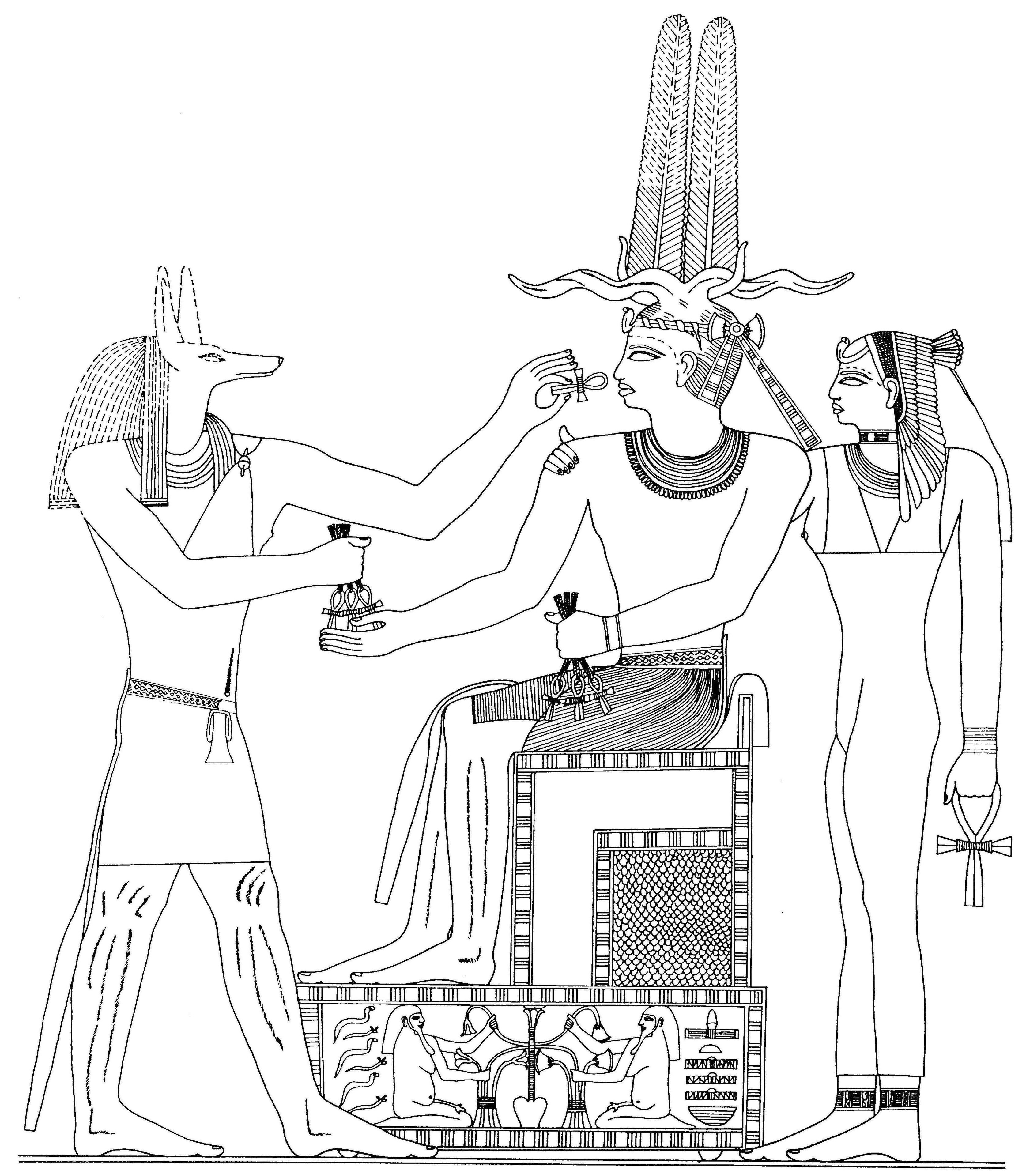
Anubis, King Niuserre, and Wadjyt